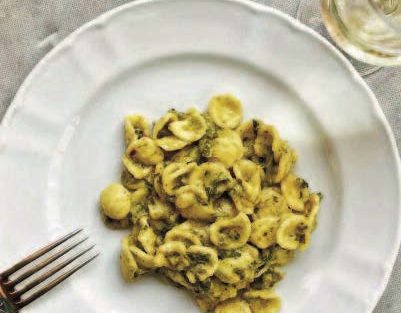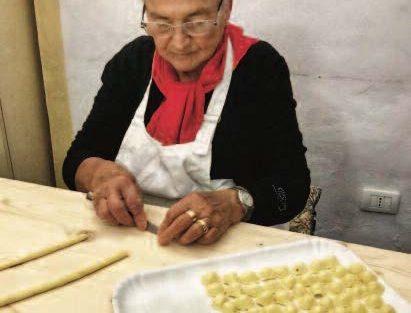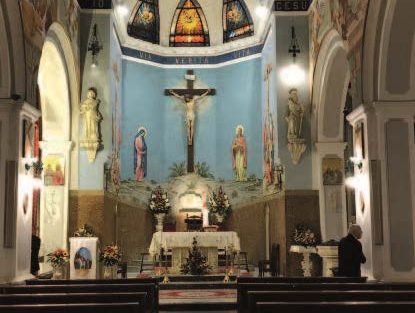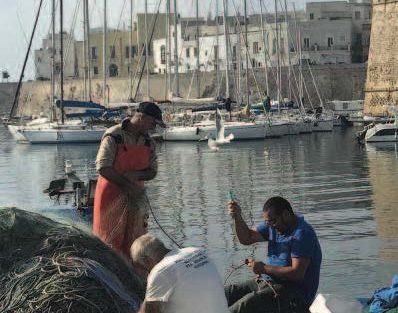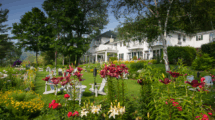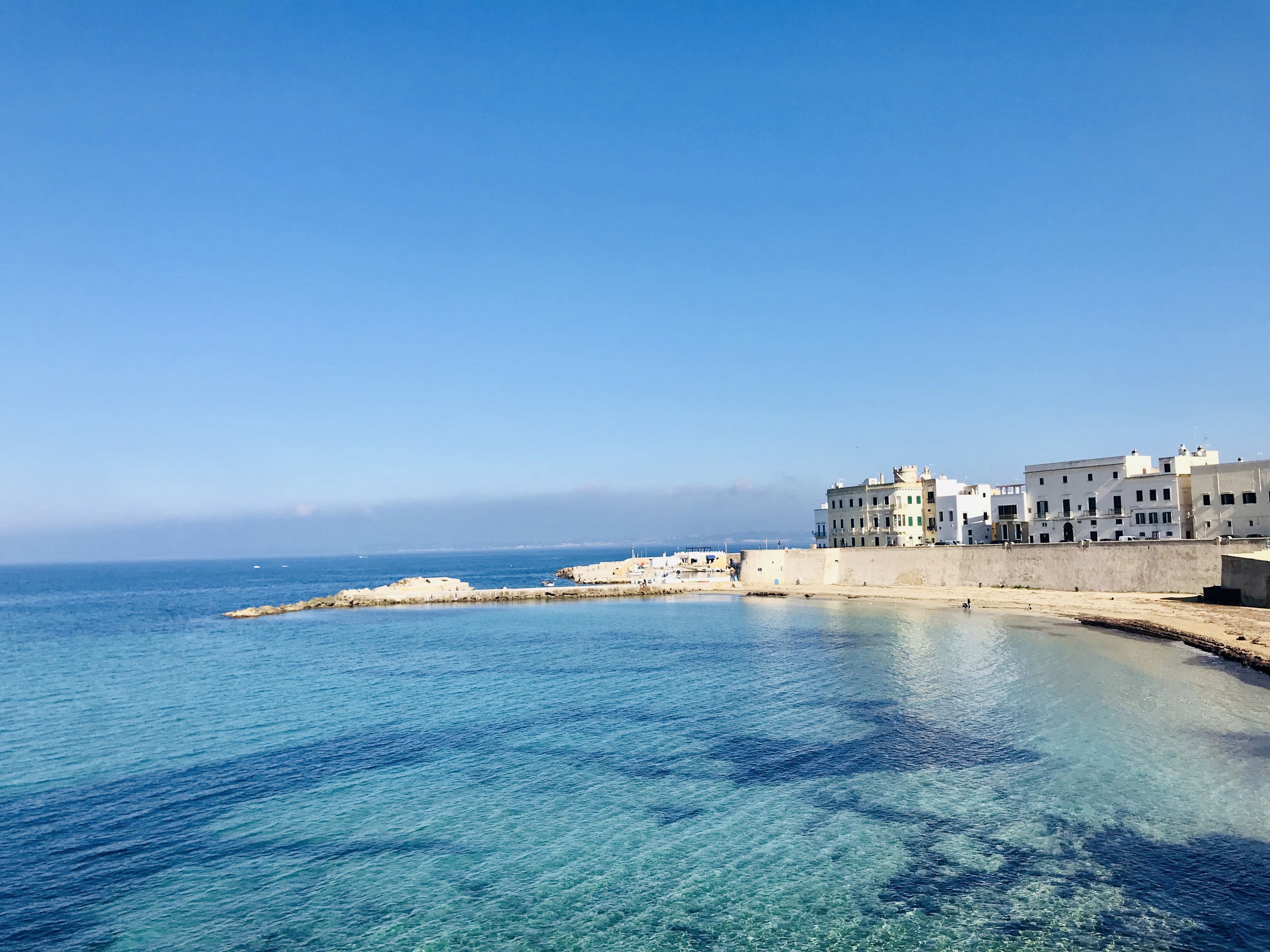
city on the Ionian coast.
PHOTO: MICHELE PETERSON
Discover rich culture, authentic regional cuisine and surprisingly few tourists on the sunny Salento Peninsula of Puglia, Italy
By Michele Peterson | June 2019
Underground olive oil presses, early Christian churches and religious feast days, the Salento Peninsula of Puglia, Italy is rich in tradition, history and culture.
Spring is an ideal time to visit and soak up its unique charms. While other parts of Europe may groan under the weight of mass tourism, it’s possible to escape the crowds in the sunny “heel” of Italy’s boot and catch glimpses into an ancient past.
Waves of Greeks, Romans, Ottomans, Spaniards and Normans invaded, conquered and once populated this area. Each left their mark on Salento’s landscape, legends and architecture, making it a fascinating destination for independent travellers.
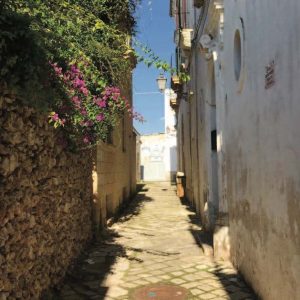
PHOTO: MICHELE PETERSON
Lecce and the Adriatic Coast
Situated between the Adriatic and Ionian seas at the southern tip of Italy’s Puglia region, the Salento Peninsula is comprised of the province of Lecce and the southern parts of the provinces of Brindisi and Taranto.
Lecce, a city on the peninsula’s northeastern coast, has been called the “Florence of the South” and is a hub for cooking schools, Italian language schools and photography buffs keen to document the city’s rich architectural heritage. Plan to spend a few days exploring its cloisters, palaces, beautiful Santa Croce basilica and the Piazza del Duomo, home to a fine collection of ornate Baroque buildings.
This is also a top place to admire cartapesta religious figures, statues made of finely crafted papier-mâché. Historically, these could be created quickly, cheaply and were also light enough to be carried in processions.
Next, head south to the town of Minervino di Lecce, near the beach town of Otranto. Evidence of the town’s Roman origins can be seen in the streets with stone paving similar to the Via Appia, the road that served as the Roman Empire’s military and economic artery connecting Rome to the port of Brindisi.
You can soak up some local history at Palazzo Ducale Venturi, a 16th century fortified palace that has been restored as a luxury boutique hotel and spa. During the restoration, workers uncovered impressive star-vaulted ceilings, bedrooms adorned by impressive frescoes and a secret passageway built — according to local legend — to facilitate liaisons between the Duke Venturi of Minervino and the Abbess of a nearby convent.
Springtime is an especially beautiful time to visit the Salento. Not only are the anemones, poppies and wild orchids in full bloom, but there are many spring festivals to enjoy. One of the most significant is the festival of the Tavole di San Giuseppe (St Joseph’s Tables) in March.
During this religious festival, families create a Tavola di San Giuseppe in their home, according to precise rules and traditions. The tables are carefully laid out with 13 places, representing the Holy Family and 10 saints. Dignitaries, family and guests are then invited to enjoy an abundance of regional foods including ritual bread, pasta and chickpeas (their yellow hue representing the colour of spring) as well as pickled onions (representing the transition to a new season).
Inland towns
Another significant celebration of gastronomy and culture takes place further north during the summer Medieval Festival in the town of Leverano. Situated inland from the Gulf of Taranto coastline, landmarks here include the impressive Torre Federiciana dating to 1220. The town also hosts the Novello in Festa, the New Wine Festival, held in November.
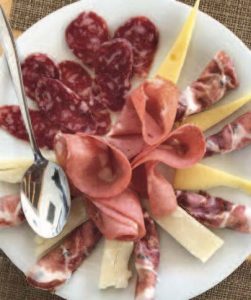
PHOTO: MICHELE PETERSON
While travelling through the dry, flat plains of Puglia, you’ll quickly appreciate how its name was derived from the Latin phrase a pluvia, meaning ‘without rain’ as the parched land is dotted with ancient olive groves and more than 100 underground olive oil presses. Carved into the soft limestone, the underground facilities historically protected the olives from the scorching heat and theft. While many lie abandoned, others have been restored into atmospheric trattorias.
One trattoria well worth visiting is La Grottella on the outskirts of the town of Melissano, named after the Greek word Melissos in reference to its honey production. The frantoi ipogei at this restaurant has been carefully restored. Within the onsite museum it’s possible to learn how olive oil was a precious liquid asset in ancient times, used for cooking as well as heating and lighting.
Today, Salento plays an important role in Italy’s agricultural economy, producing much of Italy’s national olive oil output as well as full-bodied wines. While in Melissano, wine fans should visit the Unione Agricola di Melissano, a cooperative producing Negroamaro, a ruby red wine with black fruit flavours, as well as the medium bodied Primitivo, one of the Salento’s most iconic wines.
Also, worth visiting is the nearby town of Racale, with its rich history evident from depictions of the she-wolf of Rome on its fountains, city gates and 600-year old stone walls. This small, inland village brims with unassuming genuineness; its cobbled streets empty except for cascading flowers, daily markets and restaurants. The cucina povera tradition means the cuisine is simple and delicious, relying on fresh, local produce.
Matino, too, is a charming village of winding streets, courtyards and stacked stone houses known as casa in corte, many of which have been converted into stylish B&Bs. Don’t miss dining at the atmospheric Trattoria Vinha, located within a restored historic olive oil facility.
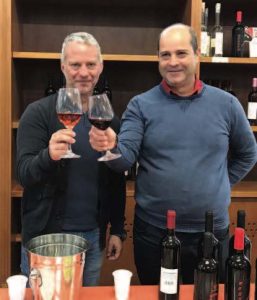
PHOTO: MICHELE PETERSON
There’s much to experience every season in the Salento. Each November, the tiny town of Taviano celebrates the Festival of San Martino (St. Martin of Tours). While the festival coincides with the vino novello (new wine of the season) harvest much like other autumn festivals throughout Italy’s wine-producing regions, in Taviano the Festival of San Martino recognizes the patron saint of winemaking, horsemen and horses, the poor and the injured.
The hub of festivities is the Piazza San Martino, a plaza dominated by a Baroque church built in 1635. The statue of San Martino is taken from its position within the church and hoisted on the shoulders of devotees in a procession led by priests and dignitaries. Brass bands parade, while residents and visitors revel in the winding cobbled streets lined with bars, cafes and restaurants.
Gallipoli and the Ionian Coast
Wrap up your visit with some beach time on the west coast of the Salento Peninsula, where golden sands stretch north and south of Gallipoli. Fringed by a national park filled with fragrant pines, the windswept dunes and azure waters are some of Italy’s most scenic. While summers buzz with locals, the shoulder seasons of spring and fall see few visitors.
Facing the serene Ionian Sea, Gallipoli itself is worth a few days of exploration. The quiet narrow streets lined with graceful Baroque buildings in yellow, white and pale pink, lead to a seaside promenade, a crescent of beach and a 13th century castle where the shadows of the past live on.
Travel planner
- Official Puglia website: viaggiareinpuglia.it
- Official Unione dei Comuni Jonica-Salentina website: unioneionicasalentina.it
- Palazzo Ducale Venturi: palazzoducaleventuri.com
- Getting there: Fly Air Canada from Toronto or Montreal to Rome and then take a short connecting flight to the modern Brindisi International Airport (BDS) via Alitalia or travel by train in five hours from Rome.
Enjoy orechiette rape e acciughe while dining at La Grottella Trattoria. PHOTO: MICHELE PETERSON Orecchiette is the most famous pasta in Puglia. PHOTO: MICHELE PETERSON The Chiesa di San Martino di Tours in Taviano is the hub for Festival of San Martino celebrations each November. PHOTO: MICHELE PETERSON Fisherman in the harbour in Gallipoli. PHOTO: MICHELE PETERSON



